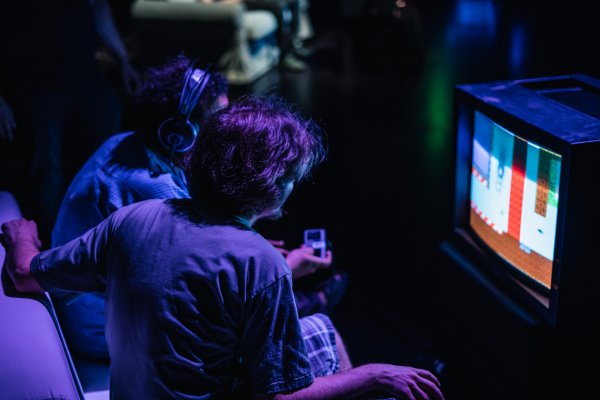GAME OVER
Eröffnung:
Laufzeit:

game over is an explorative musical computer game environment that is both played live by performers and presented in the form of an interactive installation. In the performance, clarinetists steer their avatar through extensive, complex 2D game worlds with the help of a wireless motion sensor on the instrument. By freely exploring the environment, interacting with the (computer-controlled) inhabitants and utilising the game mechanics, they create unconventional musical structures. The artist is particularly interested in the individual behaviour patterns and group dynamics that arise in an anonymous, collaborative environment for music production.
The game worlds are collages of familiar 2D game genres that often overlap or merge into one another; they are conceived as musical scores that can be re-read again and again. The composer occasionally intervenes by triggering events or reprogramming parts of the game in real time.
There are no predefined rules, instead the players are "thrown" into the game world and asked to find their own goals in a wide space of possibilities.
The project stems from an ongoing exploration of the artistic potential of computer games, in particular the expressive potential of spontaneous decision-making and creative rebellion against a system of arbitrary rules. There is no winning or losing: Players can "die", but are only "teleported" to another area and forced to be quiet for a few seconds. In general, there are no predetermined goals at all.
game over is based on a specially developed C++ 2D game engine that is optimised for musical applications and uses Pure Data as its audio engine. During development, it was important to keep the entire system portable and as lightweight as possible, so that it can even run on single-board computers such as the Raspberry Pi.
The first version of game over was created as part of the artistic research project GAPPP at the Institute for Electronic Music in Graz, Austria, which is funded by the Austrian Science Fund (project number AR364-G24).
